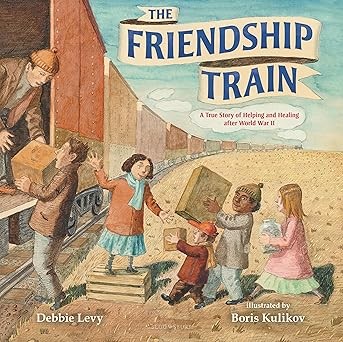
I would probably not do an author study about Eggars, but teachers should know that his first book (not for children) was a finalist for the Pulitzer prize. He has become a philanthropist, launching a writing and tutoring lab, 826 National. 826 is the largest youth writing network in the country, serving nearly 40,000 under-resourced students ages 6-18. These tutoring centers provide a gateway for meeting families, teachers, and volunteers while connecting students with community members. Teachers are encouraged to explore the website, https://826national.org/about/. This movement actually shows what a citizen, then a group of citizens, can do to make a difference.
Eggars begins the book with two questions. “What in the world can a citizen do? Who can a citizen be?” Then in one-sentence pages he outlines simple, yet profound, things a citizen can do. The illustrator has taken the simple text and expanded the idea in compelling illustrations. Some humor and fantasy are provided with the statement that even a bear can be a citizen—because “a citizen is what you do.” The book includes a call to action, an imperative to do something, with the ending circling back to the question at the beginning.
This is an important book to engage K-4th grade students in conversations about what it means to be a citizen when you are just a kid. I would begin reading aloud this book and stop after the first two pages where Eggars asks the questions, “What in the world can a citizen do? Who can a citizen be?” The class would brainstorm and record on an anchor chart what they think the answers to these questions would be. As we read the descriptions of what a citizen can do, we would continue to develop the anchor chart. Much discussion should surround the profound concepts that appear to be written so simply. I believe the reading and discussion of this book should take several days. And at the end we would engage in some type of problem-based learning.
We would also do a study on how the illustrations match the text, as well as how they expand the meaning of the text.
After reading and discussing the book together, I would encourage students to practice reading the book fluently. Once the whole class has become fluent readers of the text I would have them do a reading at the local radio station, the public library, or a book store. I would have them create their own illustrations to share as the text is being read.
Teaching Points: Citizenship, Responsibility, Circular Ending, Problem-based Learning
Students build knowledge about the world such as what it means to join a cause, right a wrong, and civic engagement.
Pathways Theme: Social Issues & Culture
Reviewed by Krystal Bishop, EdD
Professor of Education
Southern Adventist University


Author: Debbie Levy